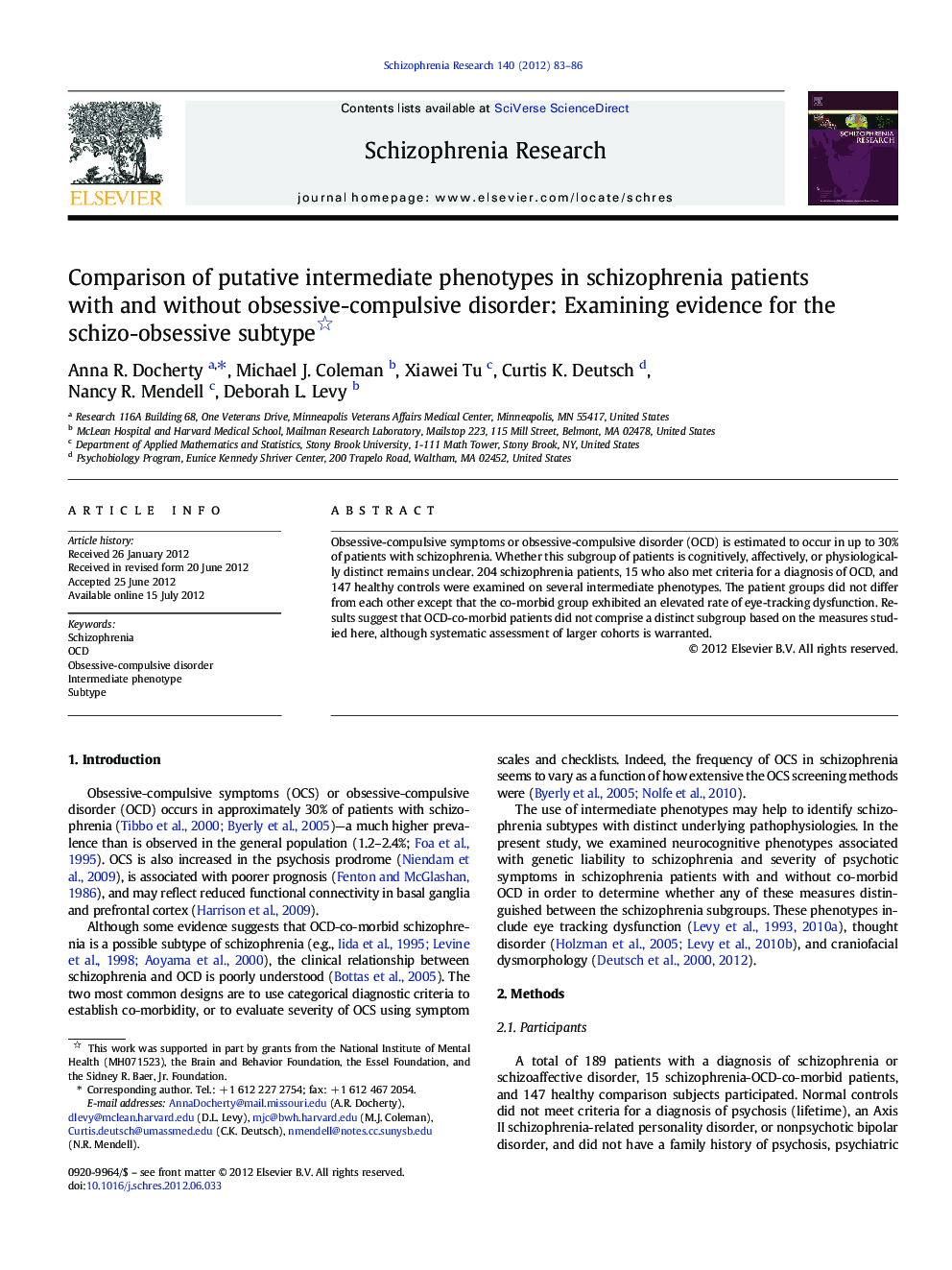| Article ID | Journal | Published Year | Pages | File Type |
|---|---|---|---|---|
| 339817 | Schizophrenia Research | 2012 | 4 Pages |
Abstract
Obsessive-compulsive symptoms or obsessive-compulsive disorder (OCD) is estimated to occur in up to 30% of patients with schizophrenia. Whether this subgroup of patients is cognitively, affectively, or physiologically distinct remains unclear. 204 schizophrenia patients, 15 who also met criteria for a diagnosis of OCD, and 147 healthy controls were examined on several intermediate phenotypes. The patient groups did not differ from each other except that the co-morbid group exhibited an elevated rate of eye-tracking dysfunction. Results suggest that OCD-co-morbid patients did not comprise a distinct subgroup based on the measures studied here, although systematic assessment of larger cohorts is warranted.
Related Topics
Life Sciences
Neuroscience
Behavioral Neuroscience
Authors
Anna R. Docherty, Michael J. Coleman, Xiawei Tu, Curtis K. Deutsch, Nancy R. Mendell, Deborah L. Levy,
